Top 10 Cars That Should Come With a Stick But Don't

If it’s not a diesel-powered, rear-wheel-drive station wagon with a manual transmission, it’s not worth considering, let alone buying.
If the world’s motoring press ran things that’s exactly what we’d all have parked in our garages. And while oil-burning grocery-getters do offer a compelling combination of function and fun, they don’t appeal to everyday Americans like they do to automotive journalists.
Normal drivers don’t necessarily appreciate the benefits of wagons and they may be oblivious to modern diesels, but one thing they certainly don’t want anything to do with is an “old-fashioned” standard transmission. The stick shift has been dying a slow death for decades, raped by technology and pillaged by a minuscule take rate. Once the current Gallardo bows out, Lamborghini won’t even offer one. Ferrari already doesn’t.
Engineers have relentlessly improved the now-ubiquitous slushbox, adding more gears, extra software and even multiple clutches for instantaneous shifts. They’ve succeeded masterfully in their mission because as disheartening as it is to car enthusiasts, many automatics are faster, smoother and, yes, even more fuel efficient than their manual counterparts.
But still, some cars are made for stick shifts the way cinnamon buns are built for icing. You can’t have something like a Mazda Miata without a manual. Well, you can, but you’re missing the point if you opt for a self-shifter. Unfortunately automakers just don’t get it. They build great products, some of which SCREAM at the top of their cylinders for standard-shift transmissions. Here are the Top 10 cars that should come with manuals but don’t.
One of the most legendary vehicles ever built is Porsche’s 911. This rear-engined sports car has been titillating drivers for five consecutive decades, offering an experience that’s unlike anything else on the road.
Today’s neun-elf is available in more flavors than there are seasonings on a spice rack, and yes, you can even get some models with a manual gearbox. Naturally that’s great news, but it’s not enough to stop us from grousing about the race-ready GT3, which is auto-only.
This scorching version of the 911 is powered by a 3.8-liter horizontally opposed six-cylinder engine. One U.S. gallon’s worth of displacement may sound like an unimpressive figure for a sports car but the powerplant’s output is anything but mediocre. It cranks out a walloping 475 horses and revs to the moon with a 9,000-rpm redline.
In lieu of a proper three-pedal setup is a high-tech seven-speed dual-clutch automatic gearbox, PDK in Porsche parlance. It routs power to the GT3’s rear wheels, helping the car sprint from zero to 60 miles an hour in just 3.3 seconds. Its top speed is 195 mph!
It would be slower with a stick shift. But we don’t care.
Manual transmissions have typically been offered in two broad and contradictory segments of the automotive market. Naturally they’re very well suited to sporty vehicles where driver involvement is paramount, but they’ve also played a key role in value-focused models.
In years past manual transmissions were cheaper than automatics, something that’s no longer necessarily the case. Along with sporty vehicles they had a place in small, affordable cars where value was king. But today even some cheap-and-cheerful models are automatic only.
Case in point: the Scion iQ. This tiny city car is offered exclusively with a continuously variable transmission (CVT). These somewhat unpopular automatics lack set steps like conventional gearboxes. Instead they use variable-diameter pulleys and a special belt to change ratios.
CVTs tend to be ultra efficient, but less fun than a prostate exam. The diminutive Scion iQ’s transmission makes the most of its 1.3-liter four-cylinder and 94 horsepower, though a manual gearbox would make winding the engine out a lot more entertaining.
Well lookie what we have here… a station wagon! Don’t get your hopes up, though, there’s no diesel and a stick shift is nowhere to be found.
The Acura TSX Sport Wagon is a welcome addition to the premium brand’s lineup, offering customers a reasonably entertaining drive along with ample cargo space. It’s powered by a 2.4-liter four-cylinder engine with 201 horsepower and 170 lb-ft of torque. Predictably it’s matched to an automatic cog-crate, but making matters worse it’s only a five-speed unit. An extra gear or three would go a long way to improving the car’s performance.
Still the four-by-five arrangement is quite efficient, delivering up to 30 miles per gallon on the interstate.
That’s fine and dandy, but Acura won’t offer its more powerful 3.5-liter V6 in the Sport Wagon, which is too bad. A little extra oomph would be appreciated, but really all we want is a manual. Is that too much to ask? Apparently, yes.
And to make matters worse, you can get a darn good stick-shift in the sedan.
After years of failed attempts to put an end to BMW’s 3 Series dynasty, GM’s latest sports-sedan offering comes damn close to parity with its Bavarian rival. The Cadillac ATS is probably the brand’s most exciting mass-market product in years, blending sophistication with a marvelously balanced chassis and stellar dynamics.
The car is an engineering masterpiece that demonstrates what the General is capable of. Accordingly, several engines are offered including an asthmatic 2.5-liter base unit (stay away, stay far away), a spunky 2.0-liter turbo and a 3.6-liter six-shooter.
The middle engine delivers 272 horsepower and 260 lb-ft of torque. Satiating enthusiasts it can be matched to one of two six-speed transmissions, either a Tremec manual or a Hydramatic autobox. What’s disappointing though is that the up-level V6, which writes a check for an impressive 321 ponies cannot be had with a stick shift. Why GM, WHY?!
You’ve got a winner on your hands and it’s a shame you can’t offer a proper transmission with the car’s very appealing V6 engine, especially when GM has a stick-shift mated to the very same engine in other products.
Porsche’s already disappointed us with its automatic-only 911 GT3 but they figured we needed another serving of sadness. Like its razor sharp little sibling the Panamera sedan is only offered with a self-shifting gearbox.
Whether the car is powered by a diesel, a hybrid drivetrain, a twin-turbo V8 or something else entirely they’re all paired with automatic transmissions – yes, even the awesome GTS model. The bulk of the Panamera lineup comes with a seven-speed PDK dual-clutch unit, though an eight-speed Tiptronic is offered on the hybrid version of the car.
With the current generation 911, Porsche has introduced a trick new 7-speed manual. Wouldn’t that be nice?
There’s off-roading and then there’s off-roading. There’s rock crawling at three miles an hour and there’s high-speed ground-pounding. With compact dimensions and solid axles front and rear the Jeep Wrangler is perfectly suited to the former. With a burly 6.2-liter V8, ample underbody plating and tons of other trail-ready hardware the Ford SVT Raptor was purpose-built for the latter.
Armed with 411 horsepower and 434 lb-ft of torque this truck’s engine could rip a giant sequoia out of the ground and drag it clear across the country. FOX racing shocks, a Torsen front differential and available bead-lock wheels make the Raptor ready for Armageddon. Too bad it’s only offered with an automatic.
Sure, the truck’s six-speed gearbox gets the job done, but this is one product that’s absolutely crying out for a manual. Please, Ford, can we have one?
What three little letters add up to BIG performance? Answer: A, M and G. Benzes graced with one vowel and two consonants are all about ludicrous speed and focused performance for a dedicated few.
The company’s C63 follows a classic formula for automotive entertainment: cram a gigantic engine under the hood of a small car. It worked in the 1960s and ‘70s and it’s just a brilliant today.
This little AMG road-rocket is powered by a 6.3-liter naturally aspirated V8 that delivers 451 horsepower, enough to propel the car from zero to 60 mph in just 4.4 seconds.
Unfortunately the C63 is only offered with an automatic transmission. To be fair, it’s a really good seven-gear unit, but still…
Very similar to the stunt Mercedes pulled with its AMG-ified C-Class, Lexus dropped a big old V8 in the engine compartment of its petite IS sedan to build a monster. Is there a conspiracy going on here? Perhaps.
In any event the IS F is a certified performance machine. It’s powered by a 5.0-liter two-by-four putting out 416 ponies and 371 lb-ft of twist. Direct AND port fuel-injection give this powerplant the best of both gasoline-delivery systems: a quiet idle and good cold-start behavior with economical operation and high output.
Matching this technologically advanced engine is an equally sophisticated transmission, a cutting-edge autotragic. It features eight forward speeds and a torque converter that can lock up between second and eighth gears for a more direct feel. But here’s a thought, for a connected feel how about offering a manual? It doesn’t get more direct than a drivetrain pressure plate clamping a friction disk to a flywheel.
It may sound like the Germans and Japanese have a monopoly on luxury and driving fun but that’s not the case. Preventing total axis hegemony are brands like Cadillac and Volvo. Yes, believe it or not the Swedish automaker best known for safety and boxy styling actually fields a premium performance machine.
The Volvo S60 R-Design is a tuned-up version of the brand’s mainline S60 sedan, a handsome, upscale car in its own right. Thanks to special tuning from Swedish performance-company Polestar the R-Design’s 3.0-liter turbocharged inline six gets a 25 horespower bump at a fat wad of extra torque compared to the standard car. Tallying the changes it has 325 ponies and 354 lb-ft of twist.
Of course other beneficial upgrades have been made as well, the most significant of which involve the suspension. R-Designs have shorter, stiffer springs, new shock absorbers and larger front sway bars to name a few of the tweaks.
But one thing that’s unchanged is the transmission. All S60s feature a “Geartronic” six-speed automatic. Of course we think the car should offer a stick shift but if it’s got to have a slusher it should at least be something up to date. How about an eight-speed unit, Volvo?
The F-Type is Jaguar’s latest sports car. It’s the British Brand’s nod to the iconic and absolutely sultry E-Type from decades past. The car seats just two people and it features a folding roof so that lucky duet can enjoy open-air driving.
Heightening its sporting intentions the car is built on a lightweight rear-wheel-drive architecture that’s constructed of old pop cans and leftover sandwich wrappers (read: aluminum). According to the company, its torsional and lateral stiffness have both been optimized for maximum agility. This is serious stuff.
Under its hood the F-Type is powered by one of three different engines, all of which are enticing. Two flavors of supercharged V6 are available. These 3.0-liter units belt out 340 and 380 horsepower, respectively. A 5.0-liter force-fed V8 serves as the range-topping engine. It’s more lethal than the payload of a B-52 bomber, delivering 495 horsepower!
Unfortunately all of these engines are paired with – you guessed it – an automatic transmission. Though to be fair, the car’s eight-speed unit is one of the best around.

Born and raised in metro Detroit, Craig was steeped in mechanics from childhood. He feels as much at home with a wrench or welding gun in his hand as he does behind the wheel or in front of a camera. Putting his Bachelor's Degree in Journalism to good use, he's always pumping out videos, reviews, and features for AutoGuide.com. When the workday is over, he can be found out driving his fully restored 1936 Ford V8 sedan. Craig has covered the automotive industry full time for more than 10 years and is a member of the Automotive Press Association (APA) and Midwest Automotive Media Association (MAMA).
More by Craig Cole




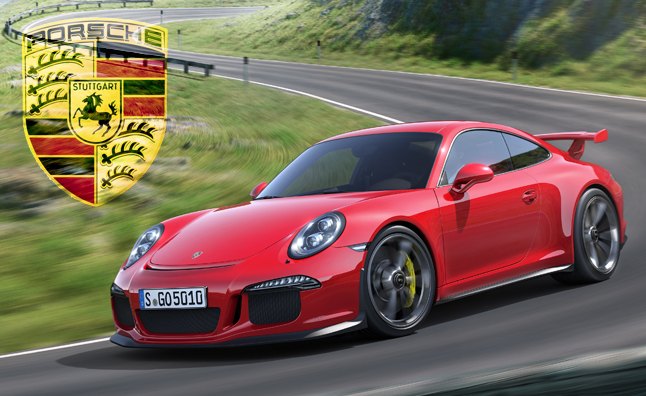



























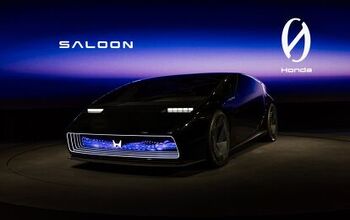



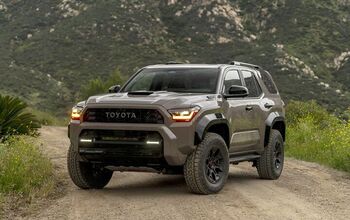

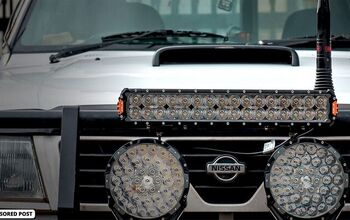
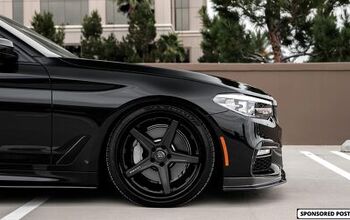

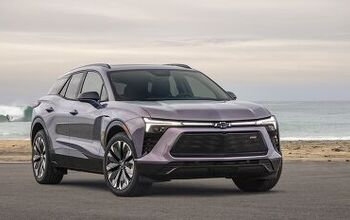
Comments
Join the conversation
I think the Nissan GT-R should have a manual version. It is not right not to be able to shift with a clutch...
ich Schaven Cadillac Elgat kareseri Sport Velge tekniesch Berymt immer weir